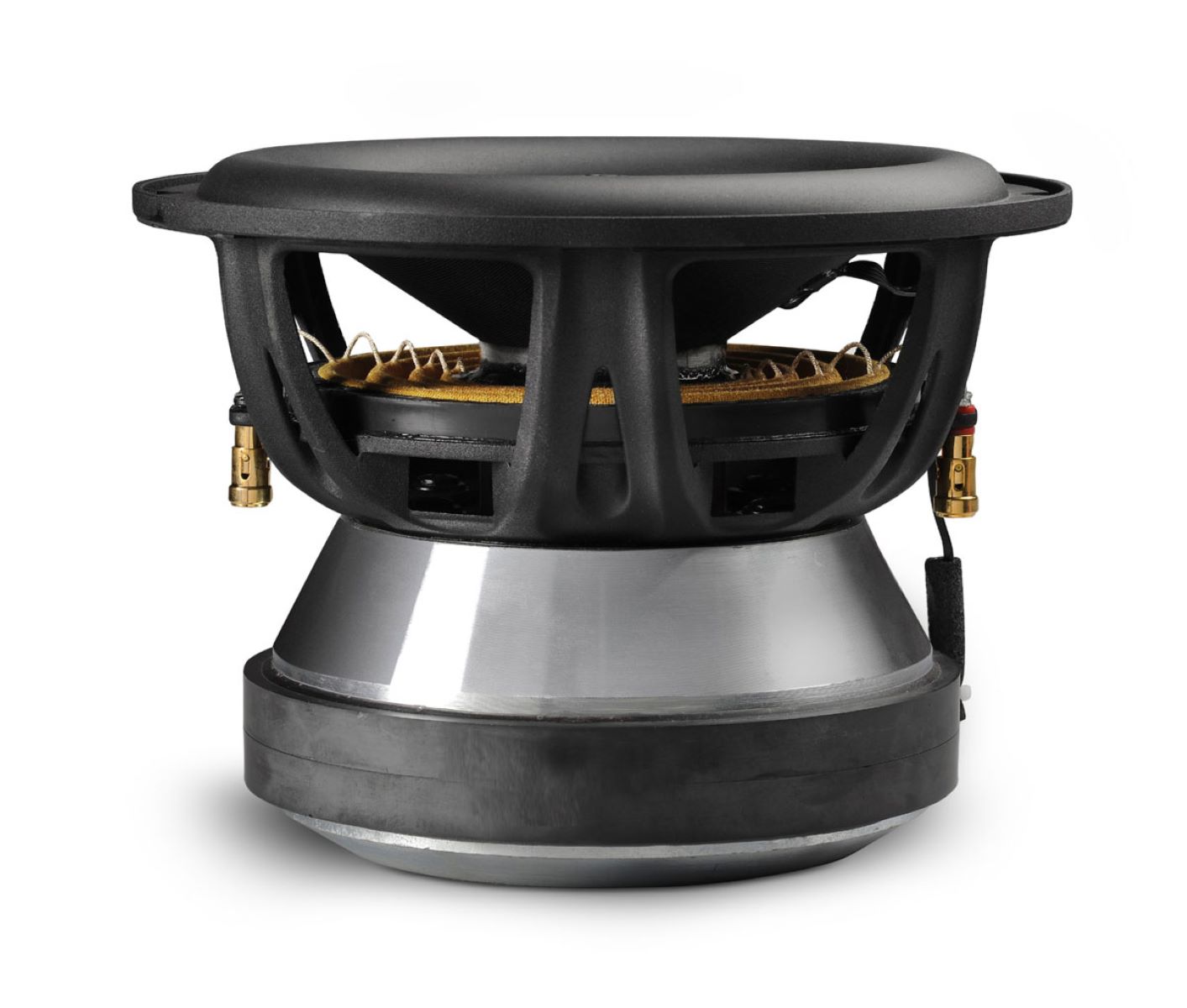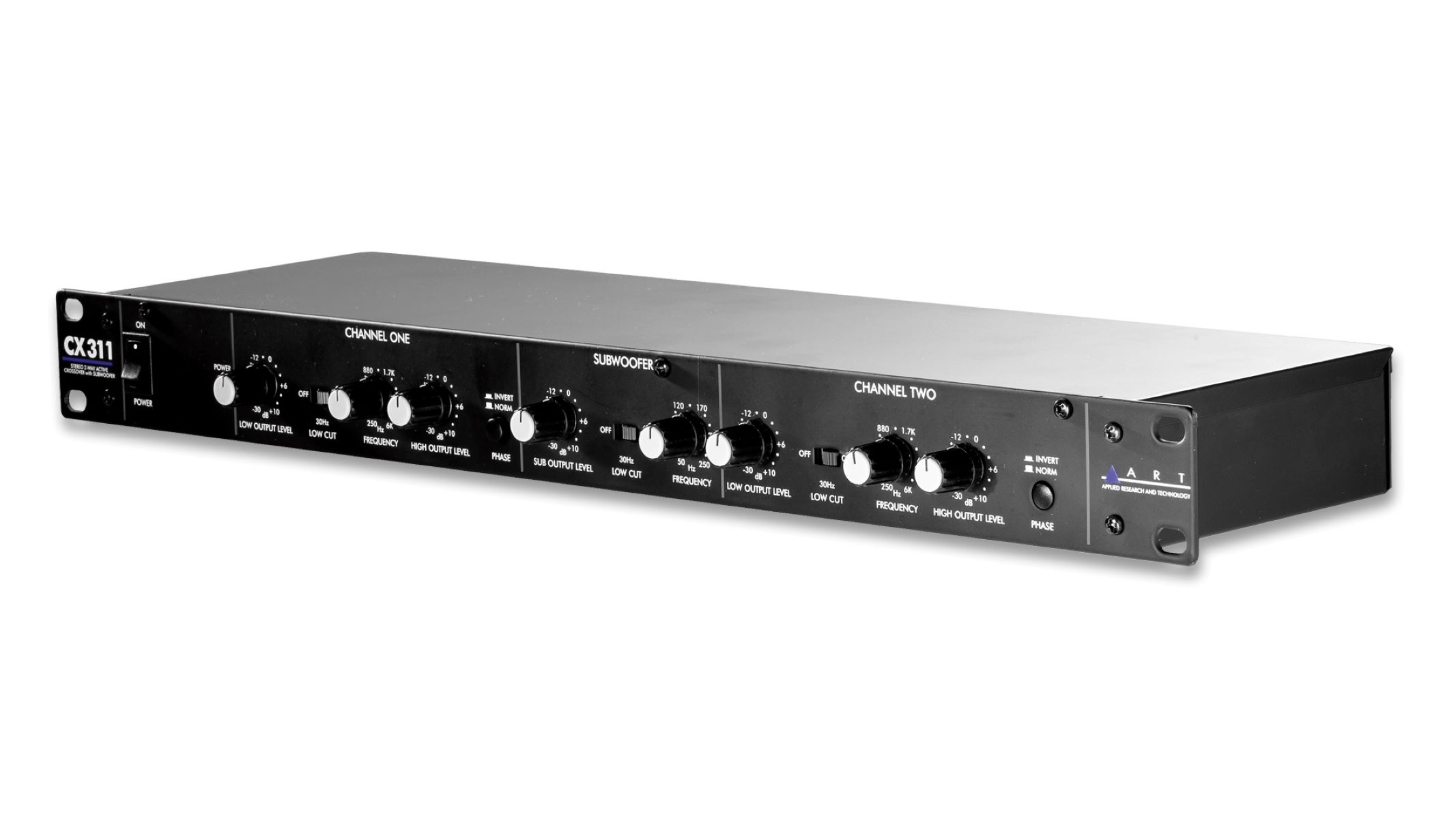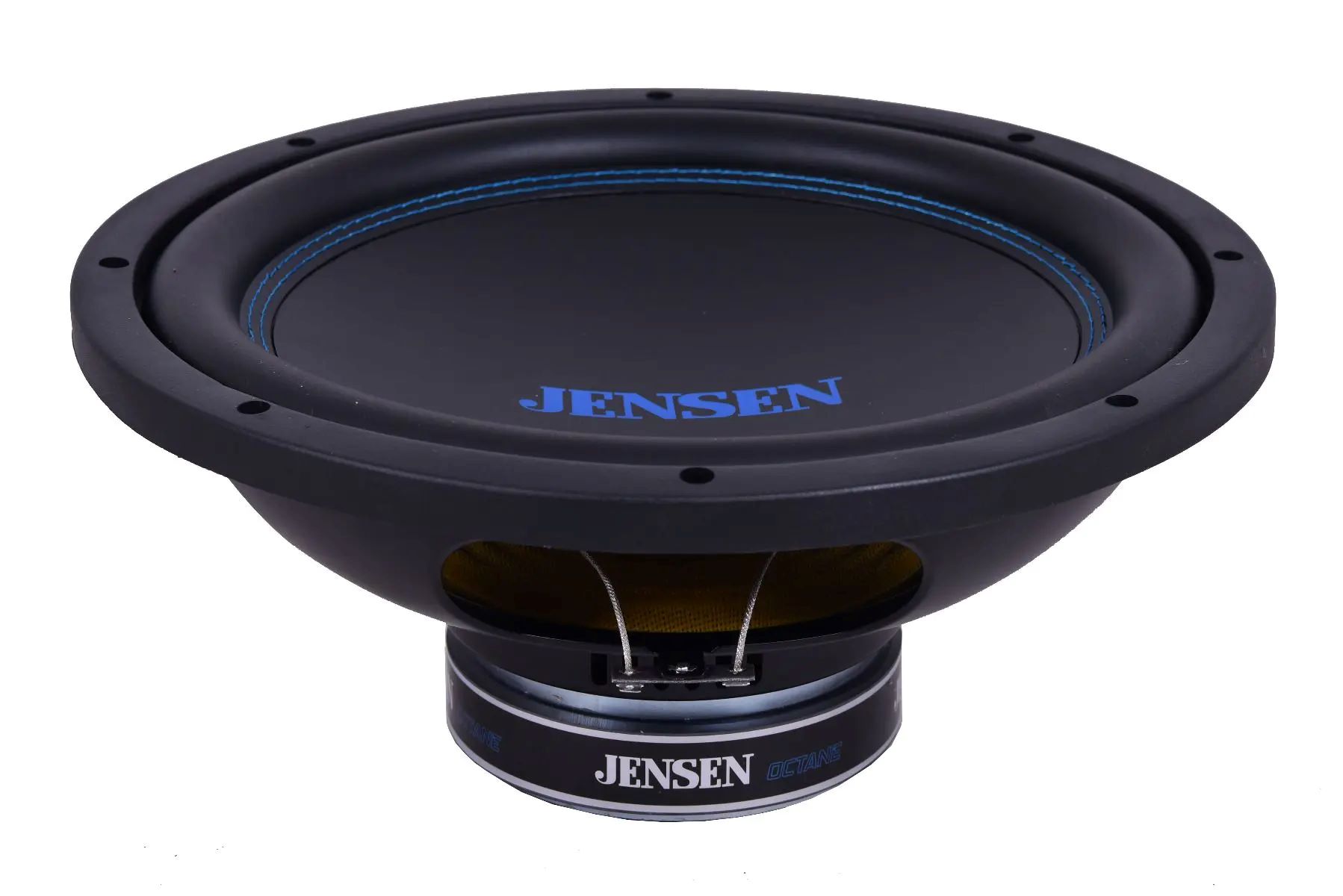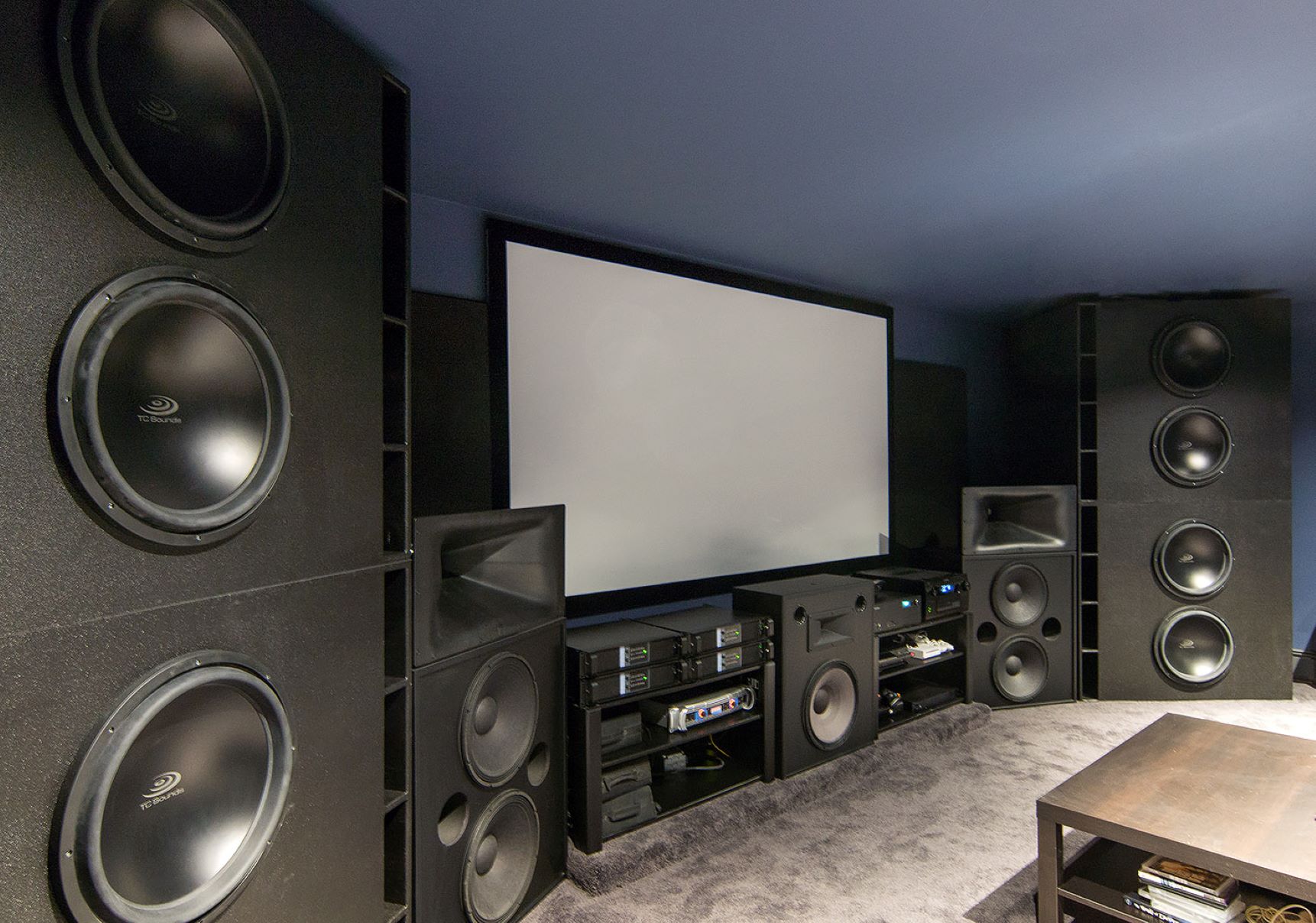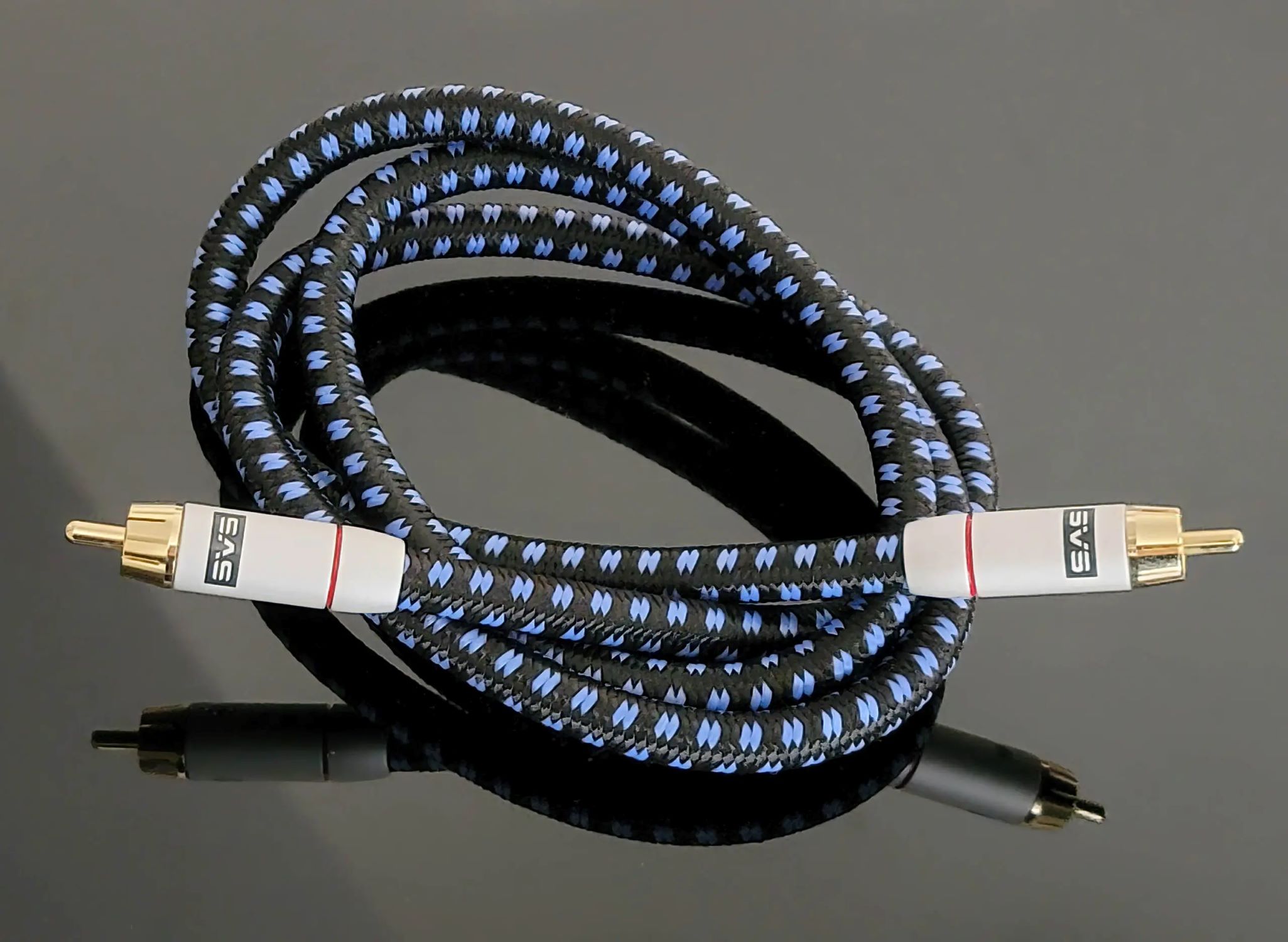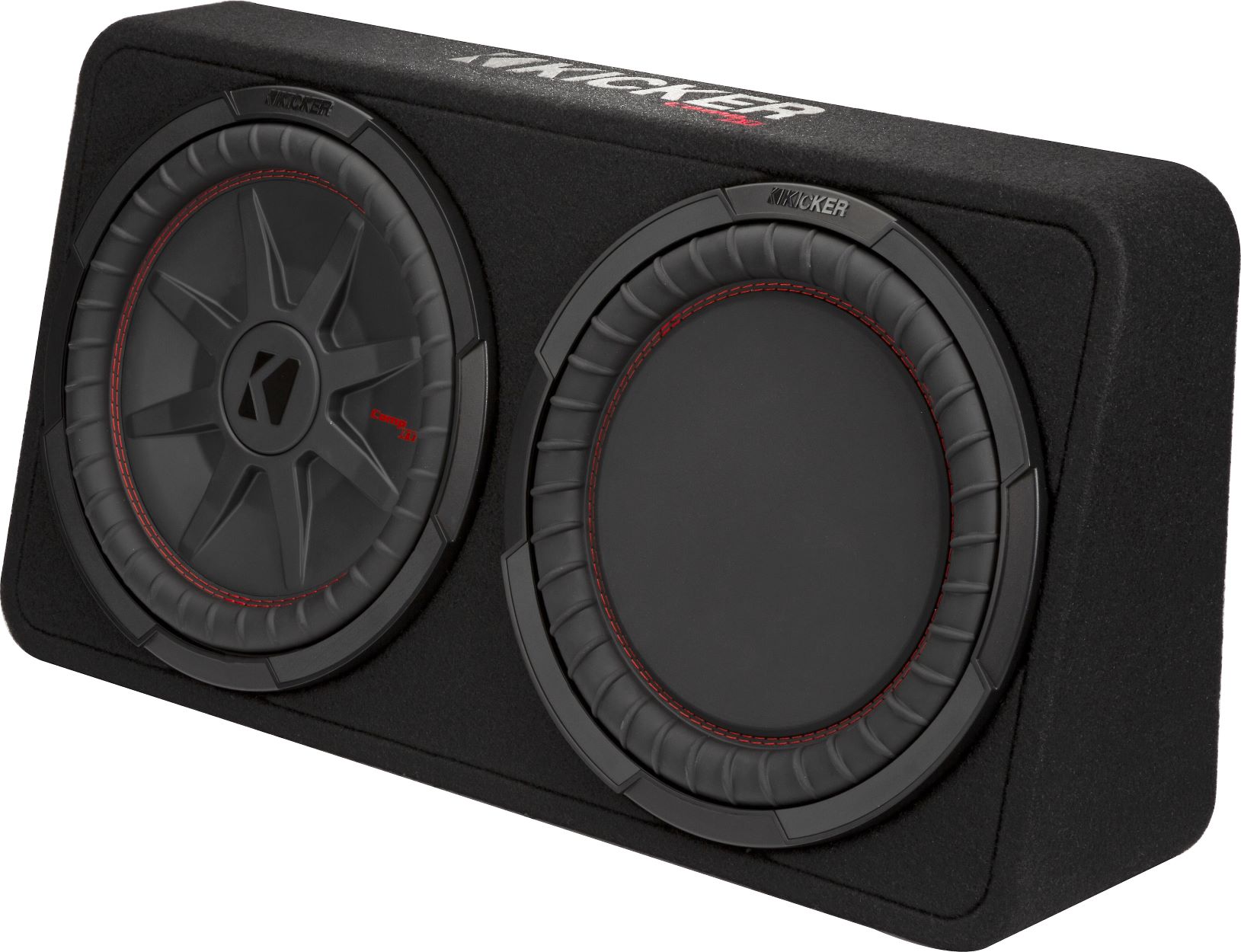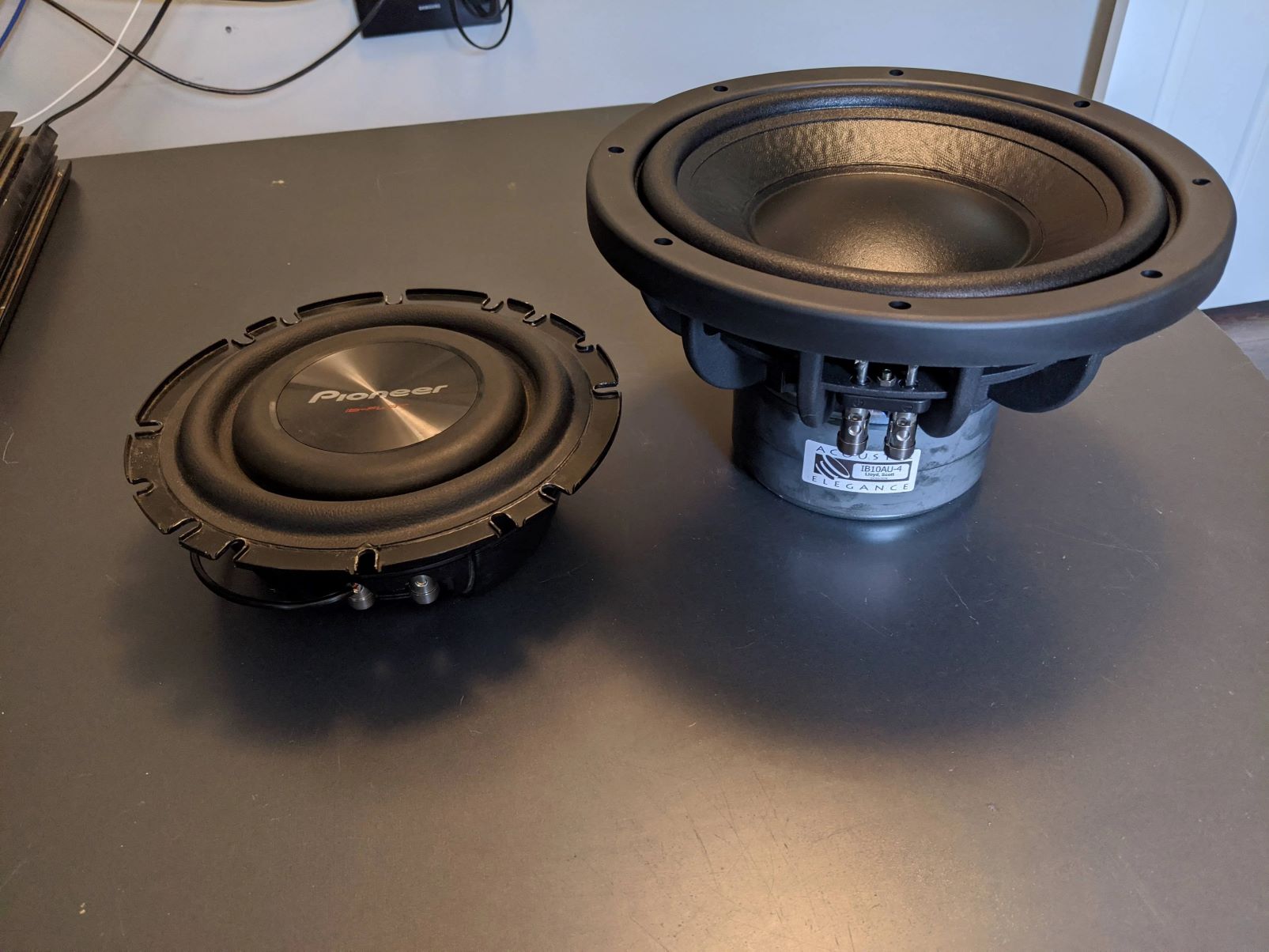Home>Devices & Equipment>Subwoofer>What Is Phase On A Subwoofer
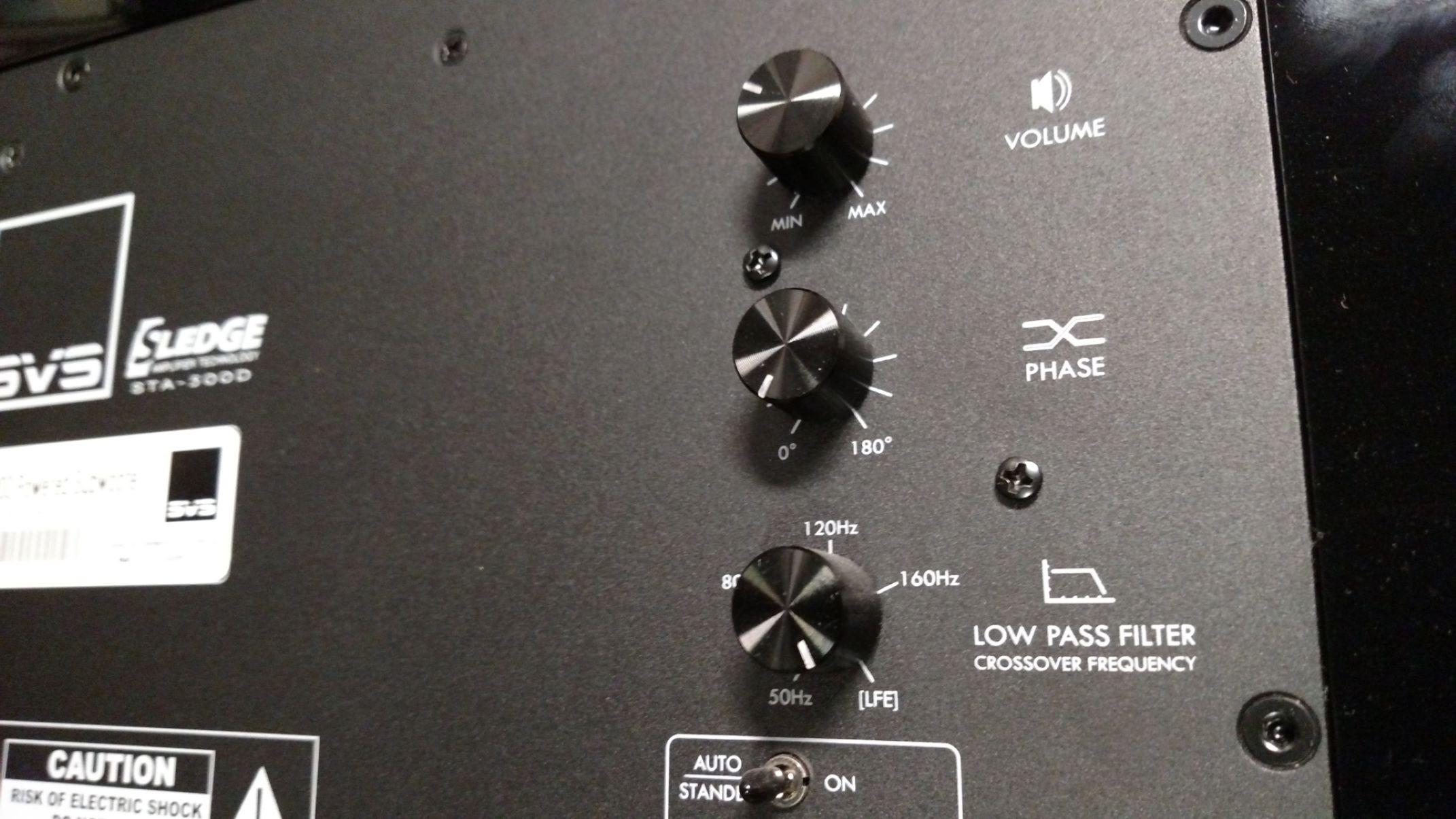

Subwoofer
What Is Phase On A Subwoofer
Published: January 20, 2024
Learn what a phase on a subwoofer is and how it affects your audio experience. Discover the importance of phase alignment for optimal subwoofer performance.
(Many of the links in this article redirect to a specific reviewed product. Your purchase of these products through affiliate links helps to generate commission for AudioLover.com, at no extra cost. Learn more)
Table of Contents
Introduction
Welcome to the world of subwoofers, where earth-shaking bass and immersive sound experiences reign supreme. Whether you enjoy music, movies, or gaming, a subwoofer is an essential component for that extra low-end impact that adds depth and richness to the audio. But have you ever wondered about the intricacies behind the scenes? In this article, we dive deep into the concept of phase in subwoofers and its significance in delivering superior audio quality.
Subwoofers are specialized speakers designed to reproduce low-frequency sound waves, typically ranging from 20Hz to 200Hz. They add the “oomph” to your audio setup, enhancing the overall listening experience. However, to truly appreciate the full potential of a subwoofer, it’s important to understand the concept of phase.
Phase refers to the relationship between different sound waves, particularly their timing and alignment. In the context of subwoofers, it involves the synchronization of the subwoofer’s sound waves with the main speakers in your audio system. Achieving proper phase alignment is crucial to prevent any cancellations or reinforcement of sound waves, ensuring accurate and balanced bass reproduction.
When the sound waves from the main speakers overlap with the sound waves from the subwoofer in-phase, they reinforce each other and create a seamless audio experience. Conversely, if the sound waves are out-of-phase, they can cancel each other out, leading to muffled or distorted bass.
Understanding phase is essential for getting the best possible audio performance from your subwoofer. By properly adjusting the phase, you can optimize the integration of the subwoofer with your existing audio system, resulting in a more accurate, natural, and immersive soundstage.
In the next sections, we’ll explore the importance of phase in subwoofers, how it affects sound reproduction, methods to adjust phase, and address common misconceptions surrounding this topic. So, buckle up and get ready to delve into the fascinating world of subwoofer phase!
Understanding Subwoofers
Before we dive deeper into the world of subwoofer phase, let’s take a moment to understand the basics of subwoofers themselves. A subwoofer is a specialized loudspeaker designed to reproduce low-frequency audio signals, specifically the bass frequencies that are crucial for creating a full and immersive audio experience.
Unlike regular speakers, subwoofers are dedicated solely to handling low-frequency sounds. They are typically larger in size and have a specific built-in amplifier that allows them to deliver powerful and accurate bass reproduction.
Subwoofers are an integral part of home theater systems, car audio setups, and professional audio environments. They significantly enhance the overall sound quality by focusing on reproducing low frequencies with precision and impact.
One of the primary purposes of a subwoofer is to fill in the lower octaves of the audio spectrum that regular speakers often struggle to reproduce efficiently. By doing so, the subwoofer complements the main speakers and provides a well-balanced soundstage where every note and effect can be heard, felt, and appreciated.
Subwoofers come in different sizes, power ratings, and designs, ranging from compact ones that can fit on a bookshelf to larger, more powerful models that require dedicated enclosures. The size and power of a subwoofer significantly impact its ability to produce deep, impactful bass.
In addition to their role in audio reproduction, subwoofers also play a crucial role in enhancing the overall listening experience. They add depth and realism to movie soundtracks, make the music come alive, and create a more immersive gaming experience.
Now that we have a basic understanding of subwoofers, let’s move on to exploring the concept of phase and its importance in achieving optimum audio performance.
What is Phase?
Phase is a fundamental concept in audio that refers to the relationship between multiple sound waves. It determines the alignment and timing of these waves, which can have a significant impact on how they interact with each other. In the context of subwoofers, phase refers to the alignment of the subwoofer’s sound waves with the sound waves from the main speakers in your audio system.
When two or more sound waves are in phase, it means that their crests and troughs align perfectly, resulting in constructive interference. This alignment strengthens the amplitude of the combined waves, resulting in a more powerful and cohesive sound. On the other hand, when sound waves are out of phase, their crests and troughs do not align, leading to destructive interference and causing the waves to cancel each other out.
Understanding phase is crucial for achieving proper integration between the subwoofer and the main speakers. If the subwoofer’s sound waves are out of phase with the sound waves from the main speakers, it can result in a phenomenon called phase cancellation. This occurs when the crests of the subwoofer’s waves coincide with the troughs of the main speakers’ waves, causing a reduction in bass response and overall sound quality.
It’s important to note that phase cancellation can occur at specific frequencies, depending on the positioning and relative distance between the subwoofer and the main speakers. This means that in some listening positions, the bass may sound weak or distorted due to phase issues.
By ensuring that the phase of the subwoofer is properly aligned with the main speakers, you can achieve a more accurate and balanced bass response throughout your listening area. This results in a more immersive and enjoyable audio experience, where the low-frequency sounds seamlessly blend with the rest of the audio spectrum.
Now that we have a clear understanding of phase, let’s explore why it is important in subwoofers and how it affects the overall sound reproduction.
Importance of Phase in Subwoofers
The phase of a subwoofer plays a crucial role in achieving optimum audio performance. Proper phase alignment ensures that the subwoofer’s low-frequency sound waves integrate seamlessly with the main speakers, resulting in a balanced and cohesive audio experience. Here are some key reasons why phase is important in subwoofers:
1. Accurate Bass Reproduction: When the subwoofer and main speakers are in phase, they work together harmoniously to reproduce bass frequencies accurately. This ensures that the low-end notes have the impact and presence they were intended to have, enhancing the overall audio quality of music, movies, and games.
2. Avoiding Phase Cancellation: Incorrect phase alignment can lead to phase cancellation, where the sound waves from the subwoofer and the main speakers interfere destructively, resulting in weakened bass response or even complete cancellation in certain frequencies. Ensuring proper phase alignment helps mitigate this issue and maintains a consistent and powerful bass presence.
3. Seamless Integration: Aligning the phase of the subwoofer with the main speakers creates a smooth and cohesive soundstage, where all frequencies blend seamlessly. This integration allows for a more immersive listening experience, with a balanced distribution of sound and a more accurate representation of the original audio.
4. Eliminating Frequency Peaks and Dips: Incorrect phase alignment can lead to peaks and dips in the frequency response, resulting in uneven bass reproduction. By dialing in the correct phase settings, you can smooth out the frequency response curve and ensure a more uniform bass performance across the listening area. This eliminates any distortion or inconsistency in the bass frequencies.
5. Room Acoustics Compensation: The acoustic characteristics of your listening room can also influence the phase response of the subwoofer. By adjusting the phase, you can compensate for any room modes or resonances that may impact the bass performance. This helps in achieving a more accurate and balanced sound regardless of the room’s acoustics.
Overall, understanding and optimizing the phase of your subwoofer is vital for achieving the best possible audio performance. It allows you to enjoy accurate, impactful, and well-integrated bass that enhances your overall listening experience.
Now that we understand the importance of phase in subwoofers, let’s explore how phase affects the sound reproduction and quality.
How Phase Affects Sound
The phase of a subwoofer impacts the way sound is perceived and reproduced, especially in the lower frequency range. Let’s take a closer look at how phase affects the overall sound quality:
1. Reinforcement or Cancellation: The alignment of the subwoofer’s sound waves with the main speakers’ sound waves determines whether they reinforce each other or cancel each other out. In-phase waves reinforce each other, resulting in a stronger and more impactful bass response. Out-of-phase waves, on the other hand, can cancel each other out, leading to reduced bass and compromised sound quality.
2. Bass Precision and Definition: Proper phase alignment contributes to precise and well-defined bass reproduction. When the subwoofer is perfectly in phase with the main speakers, the low-frequency sounds blend seamlessly, creating a cohesive and accurate audio experience. This allows for clear bass notes with improved detail and definition.
3. Soundstage and Imaging: Phase alignment also affects the spatial characteristics of the soundstage. When the subwoofer is in phase with the main speakers, the sound field is more coherent, enhancing the overall imaging and localization of sound sources. This results in a more immersive listening experience where you can accurately perceive the location and movement of instruments or sound effects.
4. Bass Timing and Transients: Timing is crucial in the reproduction of low-frequency sounds. When the subwoofer is properly phased, it ensures that the bass notes start and stop at the right time, preserving their natural transients. This improves the overall rhythm and dynamics of the music, allowing for a more engaging and realistic listening experience.
5. Psychoacoustic Perception: Our perception of sound can be influenced by phase relationships. Depending on the phase alignment, our brain interprets the sound differently, leading to subjective experiences. Proper phase alignment enhances the psychoacoustic perception of bass, making it more engaging, enveloping, and enjoyable.
Understanding how phase affects sound reproduction helps us appreciate the importance of achieving optimal phase alignment in subwoofers. By ensuring that the subwoofer is in phase with the main speakers, we can enjoy accurate, impactful, and well-integrated bass that elevates our audio experience.
Now that we have explored how phase affects sound, let’s move on to understanding the methods available to adjust the phase of a subwoofer.
Phase Adjustment on Subwoofers
Most subwoofers come equipped with a phase adjustment feature that allows you to fine-tune the phase relationship between the subwoofer and the main speakers. This adjustment is crucial to ensure proper integration and avoid phase cancellation or reinforcement issues. Let’s explore some common methods of adjusting the phase on subwoofers:
1. Phase Control Knob: Many subwoofers have a phase control knob located on the back or side panel. This knob is typically labeled from 0 to 180 degrees. By rotating this knob, you can adjust the phase in small increments to find the optimal setting that aligns the subwoofer’s sound waves with the main speakers. Experimenting with different settings while listening to bass-heavy music or movie scenes can help you find the sweet spot.
2. Remote Control: Some subwoofers come with a remote control that allows you to adjust the phase from your listening position. This convenient feature eliminates the need to physically access the subwoofer to make adjustments, making it easier to fine-tune the phase based on your listening preferences and the specific content being played.
3. Manual Measurement and Adjustments: For more precise phase adjustments, you can use specialized tools such as an audio analyzer or a sound pressure level (SPL) meter. These tools help measure the frequency response and phase coherence between the subwoofer and the main speakers. By taking measurements and analyzing the results, you can make informed adjustments to achieve the most accurate phase alignment.
4. Receiver or Processor Settings: Depending on your audio system, you may also have phase adjustment options available in your AV receiver or audio processor. These settings provide additional control over the phase relationship between the subwoofer and the other speakers in your system. Refer to the user manual of your receiver or processor to explore these options and make the necessary adjustments.
When adjusting the phase on your subwoofer, it’s important to remember that the optimal setting may vary depending on the room acoustics, speaker placement, and personal preferences. Take the time to experiment with different phase settings and listen carefully to the bass response to find the configuration that delivers the best sound quality and integration in your specific setup.
Now that we’ve covered the methods for adjusting the phase on subwoofers, let’s address some common misconceptions surrounding phase optimization in the next section.
Methods to Adjust Phase
When it comes to adjusting the phase on a subwoofer, you have several methods at your disposal. These methods enable you to fine-tune the phase relationship between the subwoofer and the main speakers, ensuring optimal integration and a balanced audio experience. Let’s explore some common methods for adjusting the phase:
1. Listening Test: A simple and effective method is to rely on your ears. Start by playing a bass-heavy track or content that you’re familiar with. Adjust the phase knob on the subwoofer in small increments, listening closely to the bass response. Pay attention to the tightness, impact, and overall coherence of the bass notes. Find the setting that delivers the most balanced and integrated bass in your listening environment.
2. Measurement Tools: Using measurement tools like an audio analyzer or a sound pressure level (SPL) meter can provide more precise adjustments. These tools help analyze the frequency response and phase coherence between the subwoofer and the main speakers. By taking measurements and comparing the results, you can make data-driven adjustments to achieve the most accurate phase alignment.
3. Room Correction Systems: Many AV receivers and audio processors come equipped with room correction systems that can optimize the phase response. These systems use advanced algorithms and microphones to analyze the room acoustics, speaker placements, and other variables. They automatically make adjustments to the subwoofer phase and other settings to optimize the sound quality based on the specific characteristics of your listening environment.
4. Subwoofer Placement: The placement of the subwoofer in the room can also affect its phase response. Experiment with different subwoofer positions to find the location that provides the best phase alignment with the main speakers. Avoid placing the subwoofer in corners or against walls, as this can result in excessive bass reinforcement or cancellation. Instead, aim for a balanced distribution of bass energy throughout the listening area.
5. Professional Calibration: For those seeking the highest level of precision, professional calibration services are available. Certified technicians use specialized tools and techniques to measure and optimize the audio system’s performance, including the phase alignment of the subwoofer. Professional calibration ensures that the audio system is optimized to deliver the best possible sound quality in your specific room environment.
It’s important to note that adjusting the phase of a subwoofer is a subjective process, and the optimal setting may vary depending on personal preferences, room acoustics, and the specific audio content being played. Take the time to experiment with different methods and settings to find the configuration that works best for your listening environment.
Now that we’ve explored the methods to adjust the phase, let’s address some common misconceptions about phase optimization in the next section.
Common Misconceptions about Phase
When it comes to adjusting the phase in subwoofers, there are a few common misconceptions that can lead to confusion and misinterpretation. Let’s address these misconceptions to ensure a clear understanding of phase optimization:
1. Phase Should Always Be Set to 0 Degrees: It’s a common belief that setting the phase to 0 degrees is always the correct choice. However, this is not necessarily true. The optimal phase setting depends on various factors, including the placement of the subwoofer, the distance to the main speakers, and the room acoustics. It’s important to experiment with different phase settings to find the configuration that delivers the best bass integration and sound quality in your specific setup.
2. Phase Adjustments Fix All Bass Issues: While proper phase alignment is crucial for optimal bass reproduction, it’s not a magic solution that solves all bass-related problems. Phase adjustments primarily address issues related to phase cancellation or reinforcement. Other factors like room acoustics, subwoofer placement, and speaker positioning also affect the bass performance. Understanding the holistic approach to subwoofer setup and calibration is essential for achieving the best possible sound quality.
3. Phase and Polarity Are the Same: Phase and polarity are often used interchangeably, but they refer to different aspects of sound reproduction. Phase relates to the time alignment and synchronization of sound waves, while polarity refers to the electrical polarity or the wiring configuration of speakers. While adjusting phase is crucial for proper integration, polarity adjustments may be necessary to ensure all speakers are wired correctly and in phase with each other.
4. Increasing Phase Improves Bass Output: Another misconception is that increasing the phase setting on a subwoofer will boost the bass output. However, phase adjustments do not directly increase or decrease the bass level. The purpose of phase adjustments is to align the subwoofer’s sound waves with the main speakers to achieve clear and precise bass reproduction. If you’re looking to adjust bass levels, it’s best to use volume or crossover controls on the subwoofer or the AV receiver.
5. Phase Adjustment Is a One-Time Process: Phase optimization is not a one-time task. Factors such as room changes, speaker repositioning, or upgrades to the audio system may require re-evaluation and readjustment of the phase settings. It’s important to periodically review and fine-tune the phase alignment to ensure optimal bass integration and the best possible sound quality with any changes made to the setup.
By dispelling these misconceptions, we can approach phase adjustments with a clear understanding and make informed decisions to enhance our audio experience.
Now that we’ve addressed the common misconceptions about phase, let’s wrap up our exploration of subwoofer phase optimization in the concluding section.
Conclusion
Understanding and optimizing the phase of a subwoofer is essential for achieving the best possible audio performance. Proper phase alignment ensures that the subwoofer seamlessly integrates with the main speakers, resulting in accurate, impactful, and well-integrated bass reproduction.
Through this article, we’ve explored the concept of phase and its significance in subwoofers. We’ve learned that phase refers to the alignment and timing of sound waves, and it plays a crucial role in determining whether the waves reinforce each other or cancel each other out.
We’ve also discussed the importance of phase in subwoofers, including the impact on accurate bass reproduction, avoiding phase cancellation, achieving seamless integration, and eliminating frequency peaks and dips. Phase adjustment methods, such as adjusting the phase control knob, using measurement tools, optimizing subwoofer placement, and professional calibration, were explored to help achieve optimal phase alignment.
We’ve addressed common misconceptions about phase, including setting phase to 0 degrees, phase as a fix for all bass issues, confusion between phase and polarity, misconception about increasing phase improving bass output, and the need for ongoing phase adjustments.
Optimizing the phase of your subwoofer is a process that requires careful consideration, experimentation, and attention to room acoustics and speaker placement. By finding the ideal phase alignment, you can enjoy a more immersive, balanced, and accurate audio experience that brings your favorite music, movies, and games to life.
So, take the time to understand the phase adjustment capabilities of your subwoofer, experiment with different settings, and use tools and resources available to achieve the optimal phase alignment. Embrace the power of phase to unlock the true potential of your subwoofer and enjoy the deep, impactful bass that enhances your overall audio experience.

